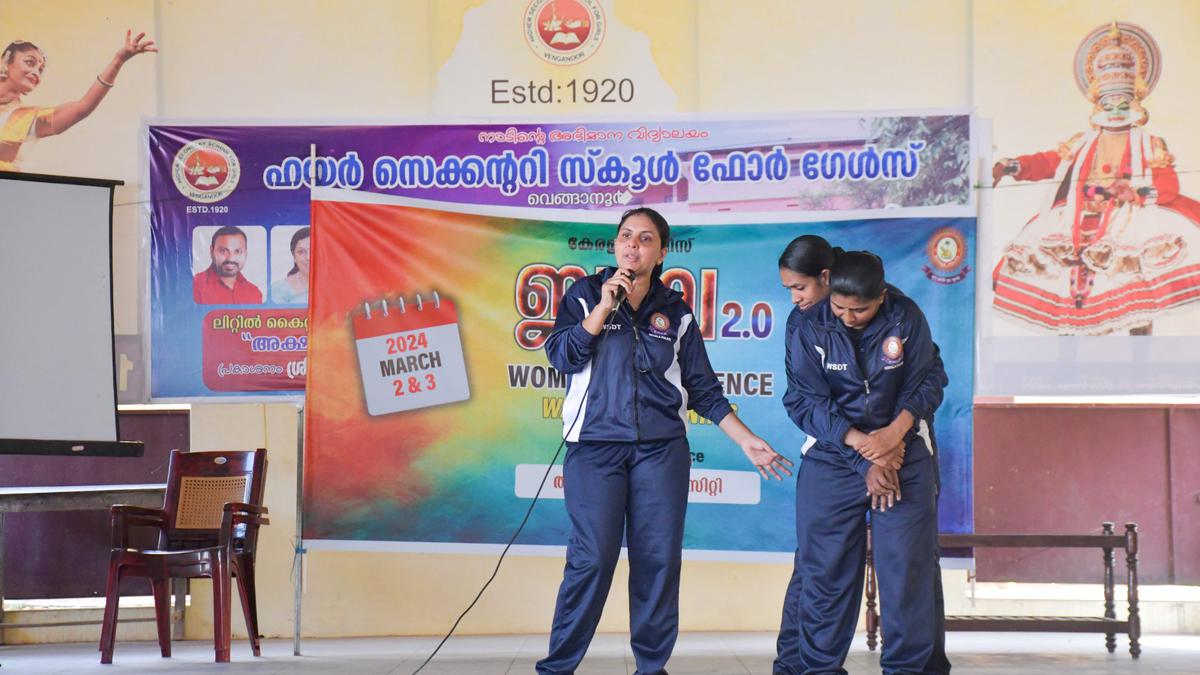
Teaching women, children self-defence techniques
The Hindu
The Jwala walk-in training was organised by the State police as part of its community policing programme Janamaithri Suraksha at Venganoor on Saturday and at Government Higher Secondary School for Girls, Cotton Hill, in the city on Sunday in connection with International Women’s Day.
When a six-year-old was kidnapped in Kollam late last year, Minna Renjith, a class 5 student of Christ Nagar Central School, asked her mother why a self-defence module was not included among the subjects taught in schools. So when Jinu Rani George of Peroorkada saw a poster about Jwala 2.0, the State police’s free self-defence training for women and children, this past weekend, she promptly brought Minna along to learn some techniques to face any violence or atrocity or get out of sticky situations.
Ms. George feels that all school students should be given this training without fail. Crimes against women and children are on the rise, especially with the increase in use of social media use, she says.
The Jwala walk-in training was organised by the State police as part of its community policing programme Janamaithri Suraksha at Venganoor on Saturday and at Government Higher Secondary School for Girls, Cotton Hill, in the city on Sunday in connection with International Women’s Day.
Jayamary A., assistant sub-inspector, Aneesban A., civil police officer; and Athulya V.J., civil police officer, led the training at Cotton Hill school. Among the attendees was a handful of young children who were very keen on learning how to protect themselves.
Ms. Athulya said their team conducted self-defence classes for institutions, residents’ associations, and martial art schools. While the walk-in training was just an orientation on what could be done to ensure personal safety, a detailed 20-hour module provided practical training to those interested.
Ms. Aneesban said the orientation was intended to provide basic awareness of how to defend oneself in a situation where no one else was around to provide help. Often, women panicked and did not react, increasing the possibility of victimisation. To avoid this, awareness of one’s immediate environment and those in it and alertness to any possibility of danger was important.
To prevent sexual harassment in public places, a confident body language, staring back at the perpetrator, and using sound to dissuade the attacker and draw the attention of people nearby were some psychological techniques that could be employed. If nothing worked, then physical defence by attacking the perpetrator’s vulnerable areas such as eyes, nose, ears, throat, sternum and groin could be adopted.











